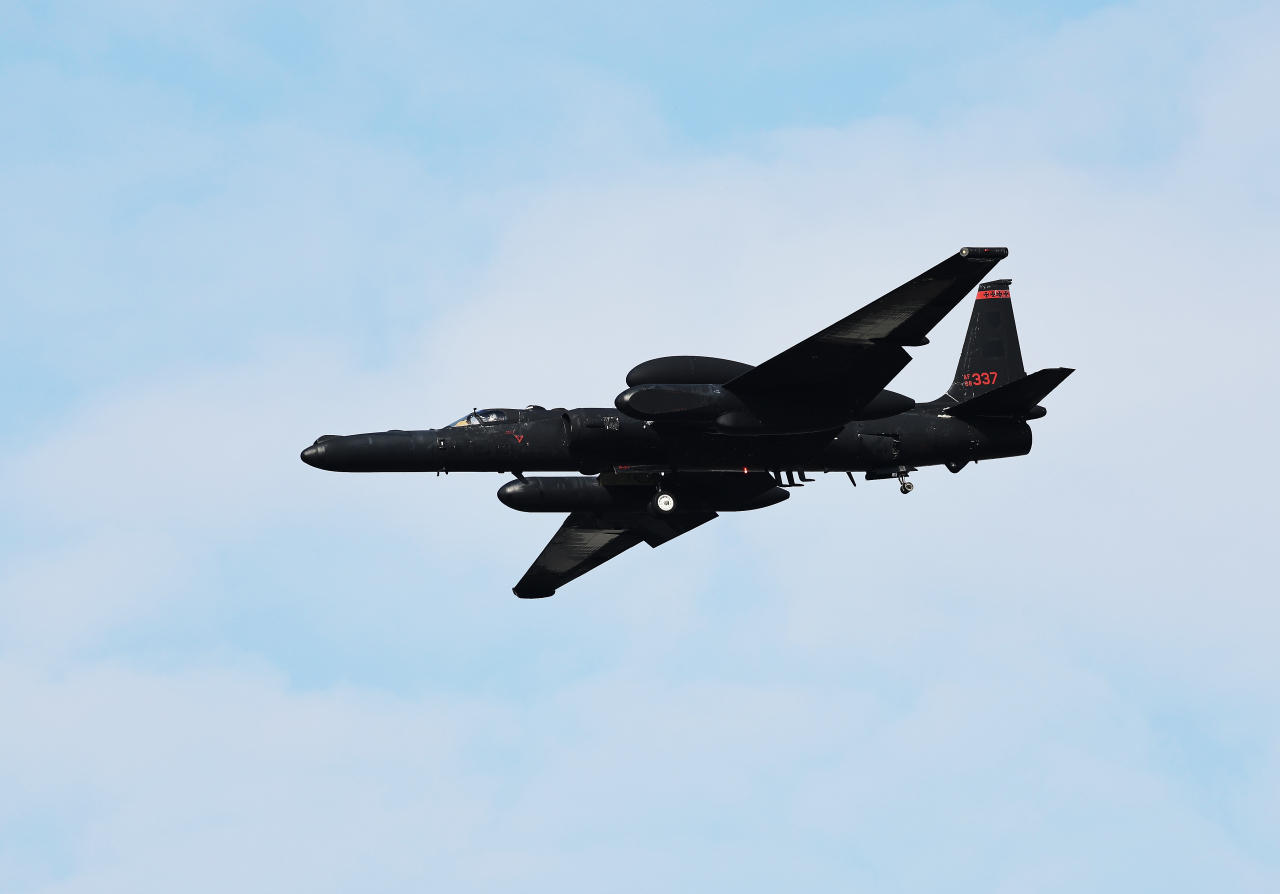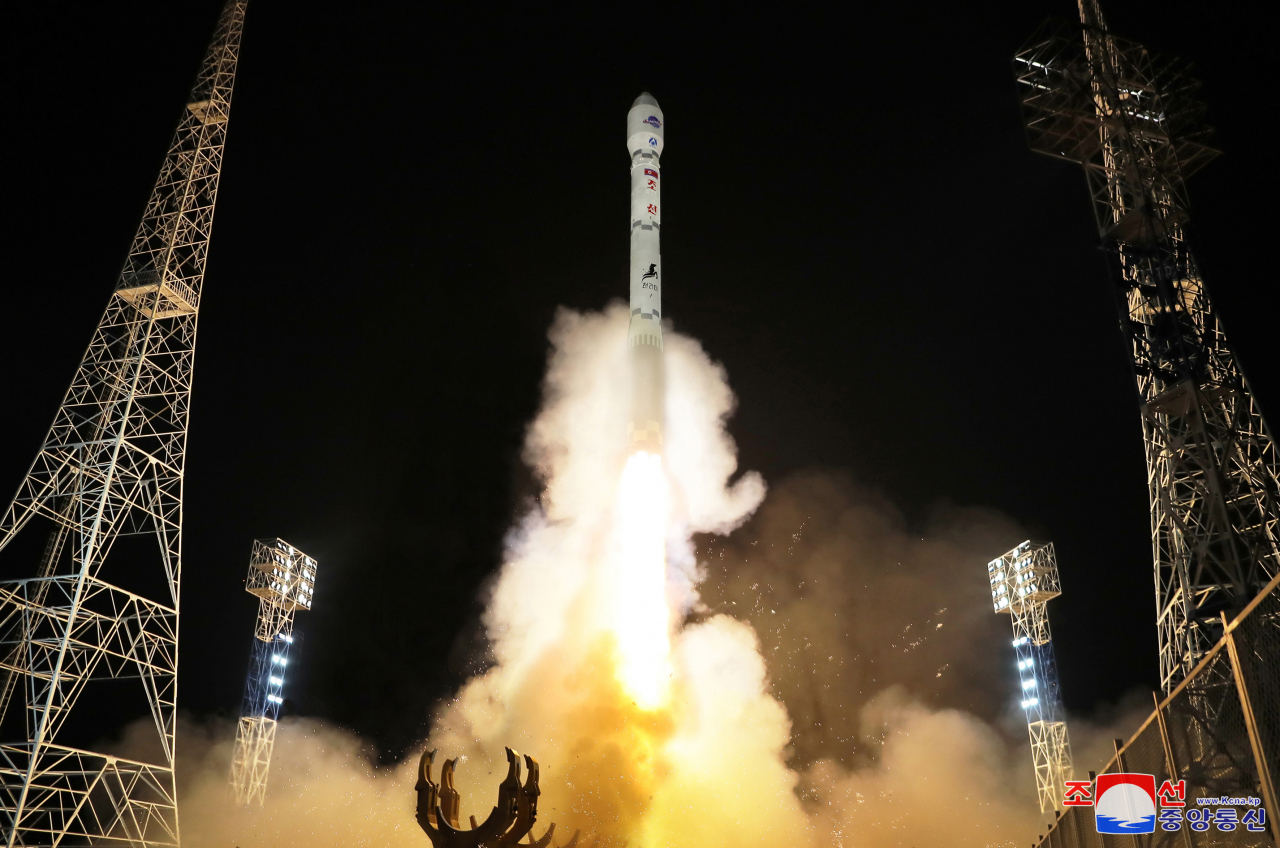[News Analysis] What happens after no-fly zones are lifted?
S. Korean military plans to deploy drones forward to monitor NK activities near the border
By Ji Da-gyumPublished : Nov. 22, 2023 - 15:29

South Korea has lifted the no-fly zones established by the 2018 inter-Korean military agreement as of Wednesday afternoon, as a tit-for-tat measure in response to North Korea's claimed launch of a military reconnaissance satellite.
The decision is the first instance South Korea has opted to suspend any inter-Korean agreements since the initial deal was signed in 1971.
South Korea's Defense Ministry announced the suspension would take effect at 3 p.m., without saying how long the countermeasure would last.
But as North Korea has severed all inter-Korean military hotlines in the East and West seas, the Defense Ministry expressed its intention to substitute direct notifications to North Korean authorities with public announcements.
“Our military is set to reinstate aerial surveillance and reconnaissance activities to detect potential North Korean provocations along the military demarcation line, as per our previous protocols predating the signing of the Sept. 19 military agreement," Heo Tae-keun, the deputy minister for national defense policy at the Defense Ministry, told a televised news briefing Wednesday morning.
Heo said North Korea's launch of a purported military spy satellite is a "grave provocation that threatens the national security" of South Korea, reiterating that the suspension is a "tit-for-tat measure in response to the provocation."
The two Koreas agreed to establish no-fly zones for all types of aircraft above the Military Demarcation Line or MDL, effective from Nov. 1, 2018.
The specifications are as follows: For fixed-wing aircraft, no-fly zones will be designated within 40 kilometers from the MDL in the east and within 20 km from the MDL in the west. Additional no-fly zones will be delineated for rotary-wing aircraft within 10 km from the MDL, and for unmanned aerial vehicles or UAVs within 15 km from the MDL in the east and 10 km from the MDL in the west.
The South Korean military, however, has evaluated that the operation of both corps-level and division-level UAVs is restricted due to the enforcement of no-fly zones.
UAVs operated by corps and divisions in a military context are unmanned aircraft utilized for reconnaissance, surveillance and various other purposes within the organizational framework of a corps or division in a military structure.
In particular, that limitation presents a challenge in effectively detecting and responding in real-time to the potential long-range artillery attack. Notably, the forward-deployed long-range artillery units are primarily focused on densely populated areas such as Seoul and the metropolitan region, yet they are strategically concealed on islands or behind mountains.
"UAVs operated at the corps or division level had to navigate behind no-fly zones, consequently functioning with limited capabilities compared to their full potential," a senior official at the Defense Ministry said during a closed-door briefing on condition of anonymity.
The South Korean military endeavored to address the surveillance gap by transitioning to other assets. However, the official noted that these alternative resources also encountered adverse effects.
"The backward operation of UAVs, resulting from the implementation of no-fly zones, has led to the expansion of areas lacking surveillance. However, the UAVs will progressively transition to forward operations," the official said.
The official, however, declined to specify when the South Korean military would recommence the forward deployment of UAVs for intelligence, surveillance, and reconnaissance, citing that it falls under operational matters.

The official emphasized that the escalating missile and nuclear threats from North Korea, coupled with their improved reconnaissance capabilities, constitute significant dangers to South Korea's national security. For instance, in September, North Korea incorporated its nuclear program into the country's constitution following the announcement of its first-use nuclear doctrine in the same month last year.
"We can no longer tolerate the increasing nuclear and missile threats posed by North Korea, along with their evolving policy and strategic shifts. Given the current global security landscape and recent developments, our military is confronted with a more urgent concern than ever before," the official said.
The official further highlighted that Russia's technical support for the satellite launch has heightened the imperative for South Korea to bolster its reconnaissance and surveillance capabilities.
Another senior official at the Unification Ministry mentioned that the suspension would be in effect until "South and North Korea establish confidence."
"Considering that the intent behind the suspension is to address the security threat posed by North Korea, it will persist until the security threat is alleviated," the official told reporters on condition of anonymity.
The legal basis for the suspension is the Development of Inter-Korean Relations Act. This legislation includes a provision that empowers the South Korean president to suspend the implementation of any agreed-upon matters, either partially or entirely, in the presence of significant reasons, including those related to national security.
The official noted that Wednesday's move marks the first instance of South Korea suspending any inter-Korean agreements based on the provisions of the act.
North Korea launched the "Chollima-1" space launch vehicle carrying the "Malligyong-1" spy satellite at the Sohae Satellite Launching Station in the Tongchang-ri area of North Pyongan Province at 10:42 p.m. on Tuesday, the country’s state media reported early Wednesday. Pyongyang also unveiled plans to "launch several additional reconnaissance satellites in a short span of time."
South Korean Defense Minister Shin Won-sik strongly condemned North Korea's satellite launch on Wednesday afternoon, while he was aboard the US Navy's aircraft carrier Carl Vinson, currently docked at the naval base in Busan since Tuesday.
Notably, Minister Shin emphasized the imperative to "coordinate combined naval exercises between South Korea and the US, alongside trilateral exercises involving Japan, timed with the port visit of the aircraft carrier Carl Vinson."
Shin said the goal of the exercise is to "maintain full readiness, facilitating an immediate response to any provocations from North Korea, and to showcase the commitment to robust responses."




















